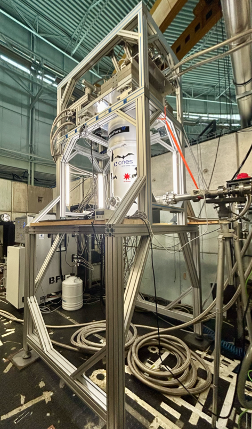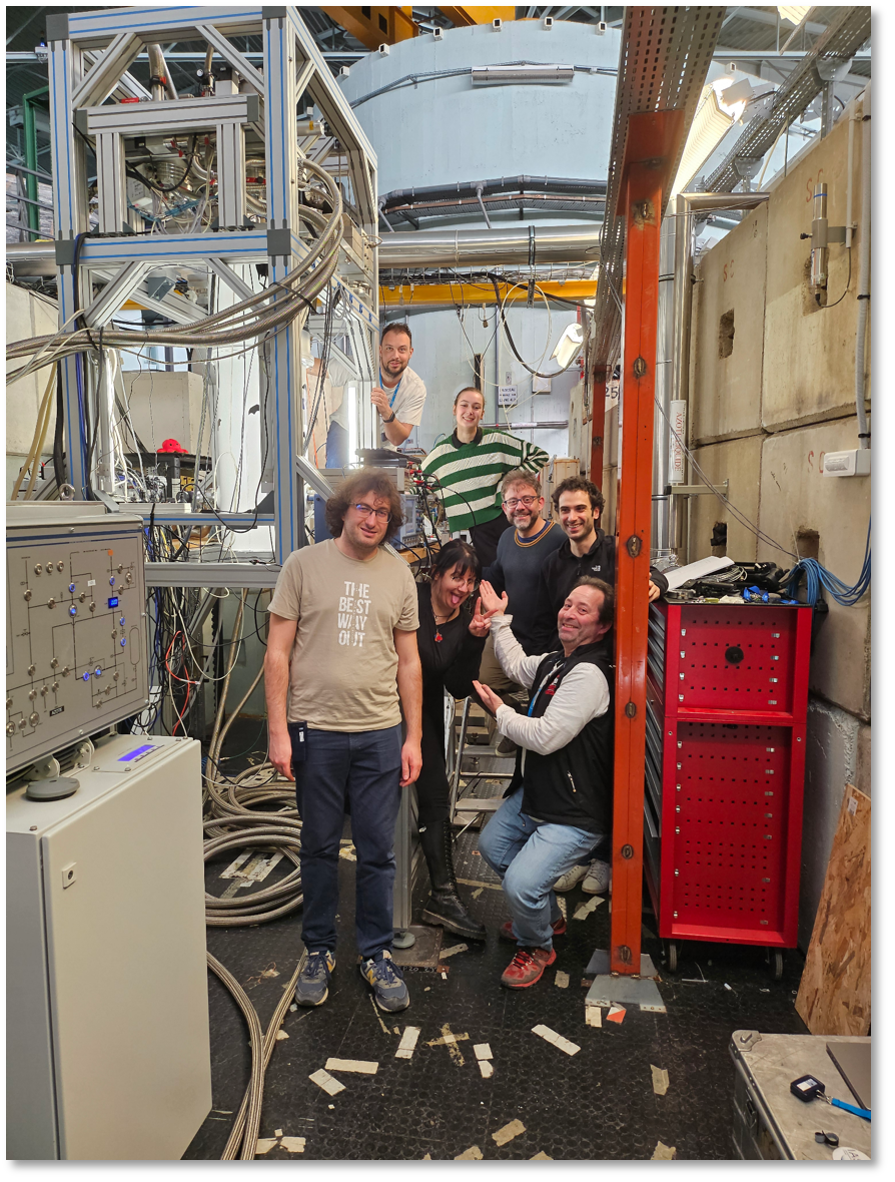First tests of LiteBIRD MHFT prototype detectors at the IAS
As part of its programme, carried out over several years, to study the effects of cosmic rays effects on highly sensitivity cryogenic detectors, the IAS has developed the DRACuLA (Detector irRAdiation Cryogenic faciLity for Astrophysics) system for measuring the response of this type of detector to the impact of particles such as protons or alpha particles.
LiteBIRD is a project for a future space mission led by JAXA, aiming to measure the B-modes polarisation of the Cosmic Microwave Background (CMB). One of its instruments, MHFT (Medium and High Frequency Telescope), is undergoing a CNES Phase A study by a European consortium.
During this second test campaign at ALTO, prototype detectors for the HFT instrument, developed by NIST in the USA, were integrated into the DRACuLA system to be cooled to a temperature of 0.1 K. It was coupled to the TANDEM particle accelerator in order to irradiate these detectors with a proton flux. These are the first measurements of this type on these detectors.
DRACuLA has demonstrated an excellent thermal stability (poster and publication to be presented at the SPIE June 2024 conference in Yokohama - A. Besnard, V. Sauvage, S. Stever, B. Maffei). The measurements on the detectors are currently being analysed and will be the subject of a future publication.
The tests and measurements were carried out in collaboration between IAS, Okayama University and the University of Pisa.
contact: Bruno Maffei

DRACuLA coupled to the TANDEM particle beamline.

Team that installed and tested the detectors on the TANDEM/ALTO particle accelerator: IAS - University of Okayama - University of Pisa




